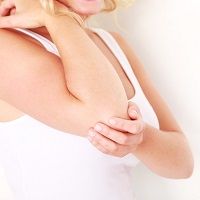Publication
Article
Contagion
Neglect of Skin Wounds Is a Risk Factor for Becoming a Carrier of S. Aureus
Author(s):
A new study in BMC Public Health finds that neglect of skin wounds is an independent and strong risk factor for becoming a carrier of Staphylococcus aureus (S. aureus), a dangerous pathogen that can cause infections and lead to life-threatening infectious diseases.

A new study in BMC Public Health finds that neglect of skin wounds is an independent and strong risk factor for becoming a carrier of Staphylococcus aureus (S. aureus), a dangerous pathogen that can cause infections and lead to life-threatening infectious diseases.
First, the authors laid out a sobering picture of the current situation: “Current prevention programs are ineffective, antibiotic resistance is rising and risk factors for becoming a carrier are incompletely understood.” The study aimed to examine whether addressing an easily preventable risk factor — neglect of skin wounds – could have a significant impact on infection.
Earlier research has shown that about one in 5 individuals is a nasal carrier of S. aureus, and as many as 30% are intermittent carriers. Nasal carriers of S. aureus have an increased risk of acquiring an infection. Risk factors for becoming a nasal carrier are incompletely understood.
The study authors noted that the burden of morbidity is elevated in crowded settings with close contact and intensive physical activity, such as on sport teams and in military settings. Inspired in part by the fact that Israel Defense Forces (IDF) over the last decade have had an unusually high incidence of skin and soft tissue (SSTI) outbreaks, the cohort study looked at three different IDF training bases in July 2011, November 2011, and March 2012. Participants, all young adult males, underwent anterior nares cultures and answered structured questionnaires on potential risk factors just before and three weeks after the start of training.
Attitudes and practices toward neglect of skin wounds were defined as perseverance in training at all costs, despite having a wound. Samples were processed within 18 hours for identification of S. aureus.
Carriage prevalence increased by 43% during training, from 33.2% to 47.6% (p  < 0.01). One-fourth (25.4%) of those with a negative culture before training became carriers. None of the socio-demographic characteristics was a risk factor for becoming a carrier. The risk of becoming a carrier was lower in the winter compared to the summer season.
“We discovered that neglect of skin wounds in practice and/or attitude is common among trainees and is a strong risk factor for becoming a S. aureus carrier,” the authors concluded. “These findings are unlikely explained by chance, selection bias or differential information bias, given our study methods. Confounding by season or training base cannot explain the findings, as we controlled for these factors…The next step would be to replicate our findings in other populations and examine whether prevention programs addressing neglect of skin wounds are effective in reducing S. aureus carriage and burden of infectious diseases.”






